Luc Tuymans was never interested in painting religious scenes. But as we stand by the altar in the Basilica di San Giorgio Maggiore in Venice, studying his two new paintings, he can’t help but wonder: ‘If you have to make a religious connotation? Purgatory and Hell.’ He looks around the vast marble hall, taking in the giant columns and the dark, ornate wooden carvings – by the 16th-century sculptor Albert van den Brulle, who, like Tuymans, was from Antwerp – that loop around the presbytery. The grandeur of the building doesn’t intimidate Tuymans. ‘I kind of like it better than the white cube,’ he confesses. ‘You have to go into confrontation with it, see how the work holds out.’
The works in question were commissioned by the Benedicti Claustra Onlus, the non-profit branch of the Abbey of San Giorgio Maggiore, and the Germany-based Draiflessen Collection, to replace Tintoretto’s The Last Supper and The Israelites in the Desert (1591–92) while they undergo restoration. The two vast canvases normally flank the impressive Renaissance altarpiece, with its golden globe held aloft by four bronze Evangelists, but from May until November, thanks to Tuymans, a very different spectacle awaits. Though he was bound to the dimensions of the original Tintorettos due to their wooden supporting structures, this supposed constraint played into one of Tuymans’s theories about art: ‘Painting is a form of limitation.’ In any case, these are two of his largest paintings to date. (‘There’s a larger one coming up,’ he says with a smile.)
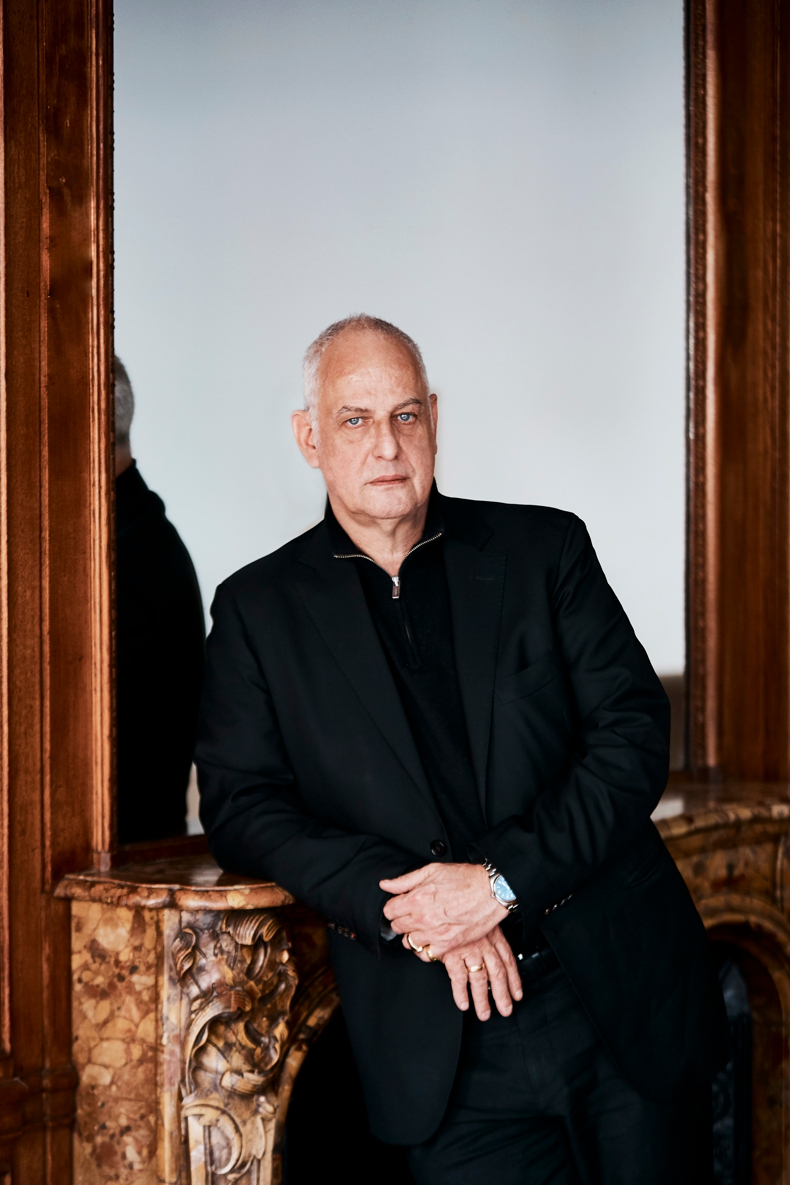
Luc Tuymans. Photo: © Alexander Salinas
Tuymans worked fast. ‘I don’t want to start thinking when I’m painting,’ he notes; he wished ‘just to give to my hands’. Both canvases were finished in a fortnight: ‘There’s no fucking Italian that could do that for you, not even in the Renaissance.’ Was it not daunting following in the footsteps of Tintoretto? He smirks: ‘I come from the city of Rubens.’
The building, which was designed by Andrea Palladio, is no stranger to contemporary art; in recent years it’s housed installations by Sean Scully, Jaume Plensa and Ai Weiwei. The idea of creating something that would live within the building rather than take it over appealed to Tuymans. The church is not a museum but a living space where a congregation still gathers to worship. ‘It’s nice, because they’re used to these Tintorettos and now they have to deal with this,’ he says, gesturing to the paintings. ‘It had to be understated and not shocking. It had to be respectful in a certain sense.’
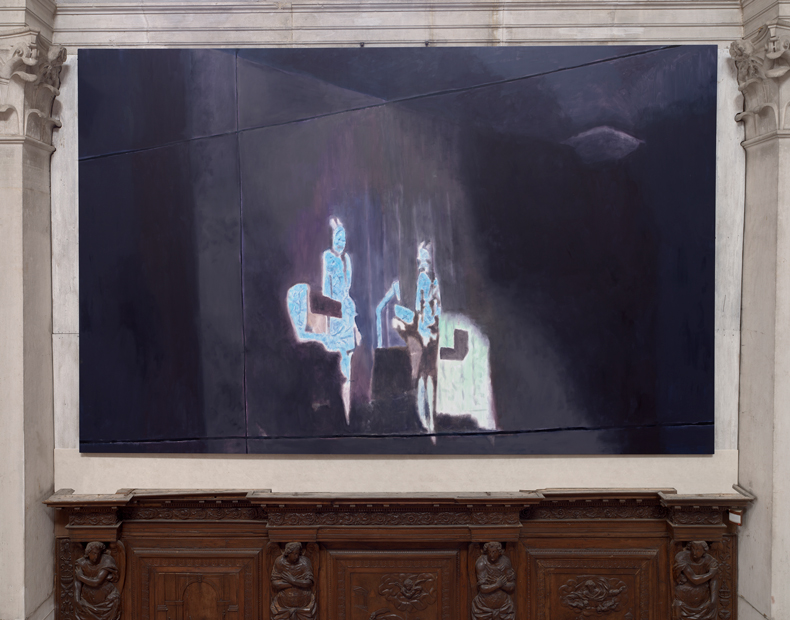
Musicians (2025), Luc Tuymans. Courtesy Studio Luc Tuymans, Antwerp/David Zwirner; © Luc Tuymans
He began with Musicians, the cooler, more complex work that depicts two spectral figures in icy blue-green tones against a wash of darkness. ‘I was nervous,’ he admits. ‘It’s a bit more subtle, but the light is incredible.’ The source material – a photograph the artist took with his iPhone at a hotel bar in Busan, South Korea – already contained a warped perspective: a side-angle reflection of musicians on a marble wall. Musicians takes the place of The Israelites in the Desert, its sense of isolation contrasting starkly with the Old Master’s populous scene.
If purgatory proved a challenge to depict, Tuymans felt on surer ground with his hellscape, Heat: ‘It’s easier because it’s more graphic – you know immediately what you’re going to get.’ The halo that radiated from the head of Christ in Tintoretto’s The Last Supper is transformed into a glowing orange orb. ‘This is like the Eternity, but 2.0,’ he points out, referring to a similar spherical tangerine he painted in 2021, inspired by hydrogen bomb explosions. Both works were informed by his fascination with the way Rothko used colour to engulf the viewer, but Heat takes a different tack, warping the source material – a bird’s-eye view of thermal lamps, heaters set on high – by concentrating on colour. ‘Here, it’s much more about the idea of heat; the real image is far more detailed. I took out the details so that the heat could come out. It’s overpowering, it sort of disintegrates the other imagery.’
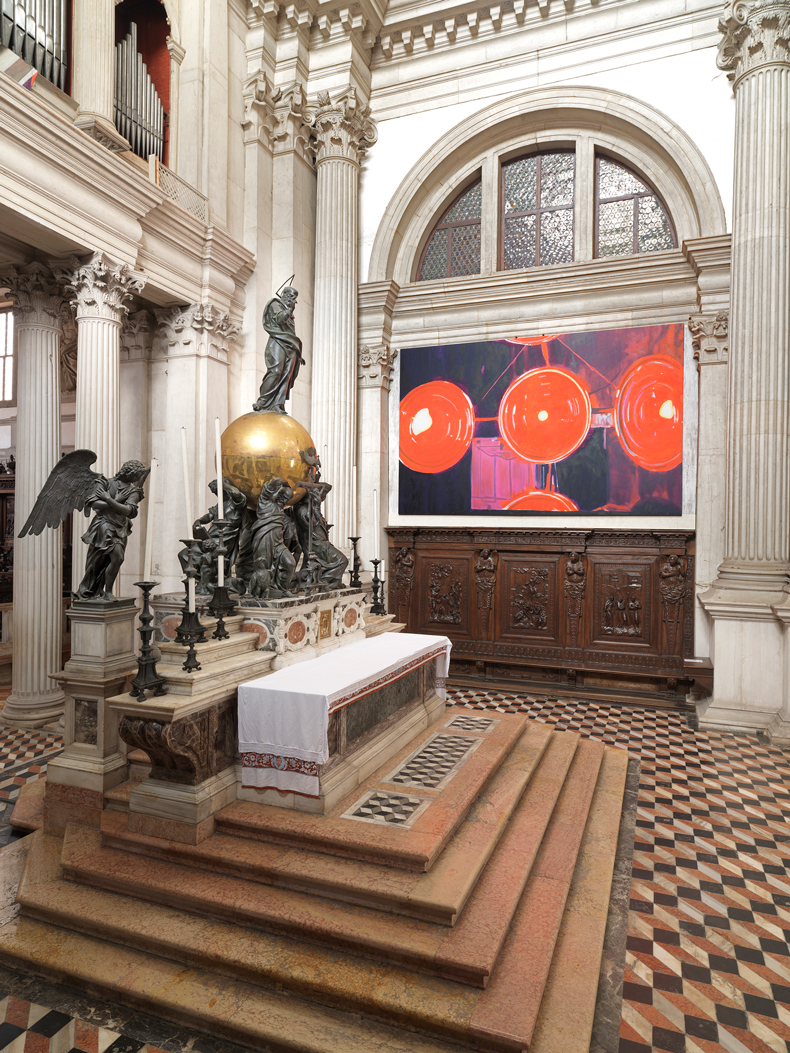
Installation view of Heat (2025) by Luc Tuymans at the Basilica di San Giorgio Maggiore in Venice. Courtesy Studio Luc Tuymans, Antwerp/David Zwirner; © Luc Tuymans
A cross seems to emerge from the formation of fiery suns – fitting, if far more vivid than the church’s relatively muted classical canvases. ‘I wanted to have this idea of temperature, but also the colour and the idea of the impact […] most of these [other] paintings you can barely see. So I needed a very subtle image, and a very clear image in juxtaposition. Anyway, that’s clearer than any Tintoretto,’ he says, gesturing towards Heat. ‘That is pure attack, it’s blatant, pure attack.’
Luc Tuymans’s Musicians and Heat are at the Basilica di San Giorgio Maggiore, Venice, until 23 November.


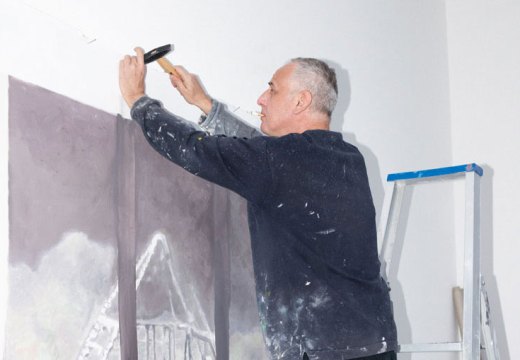
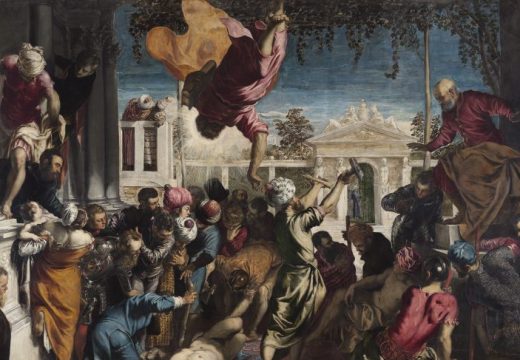
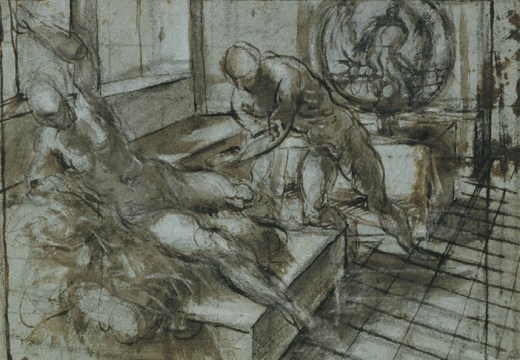









![Masterpiece [Re]discovery 2022. Photo: Ben Fisher Photography, courtesy of Masterpiece London](http://www.apollo-magazine.com/wp-content/uploads/2022/07/MPL2022_4263.jpg)
Suzanne Valadon’s shifting gaze